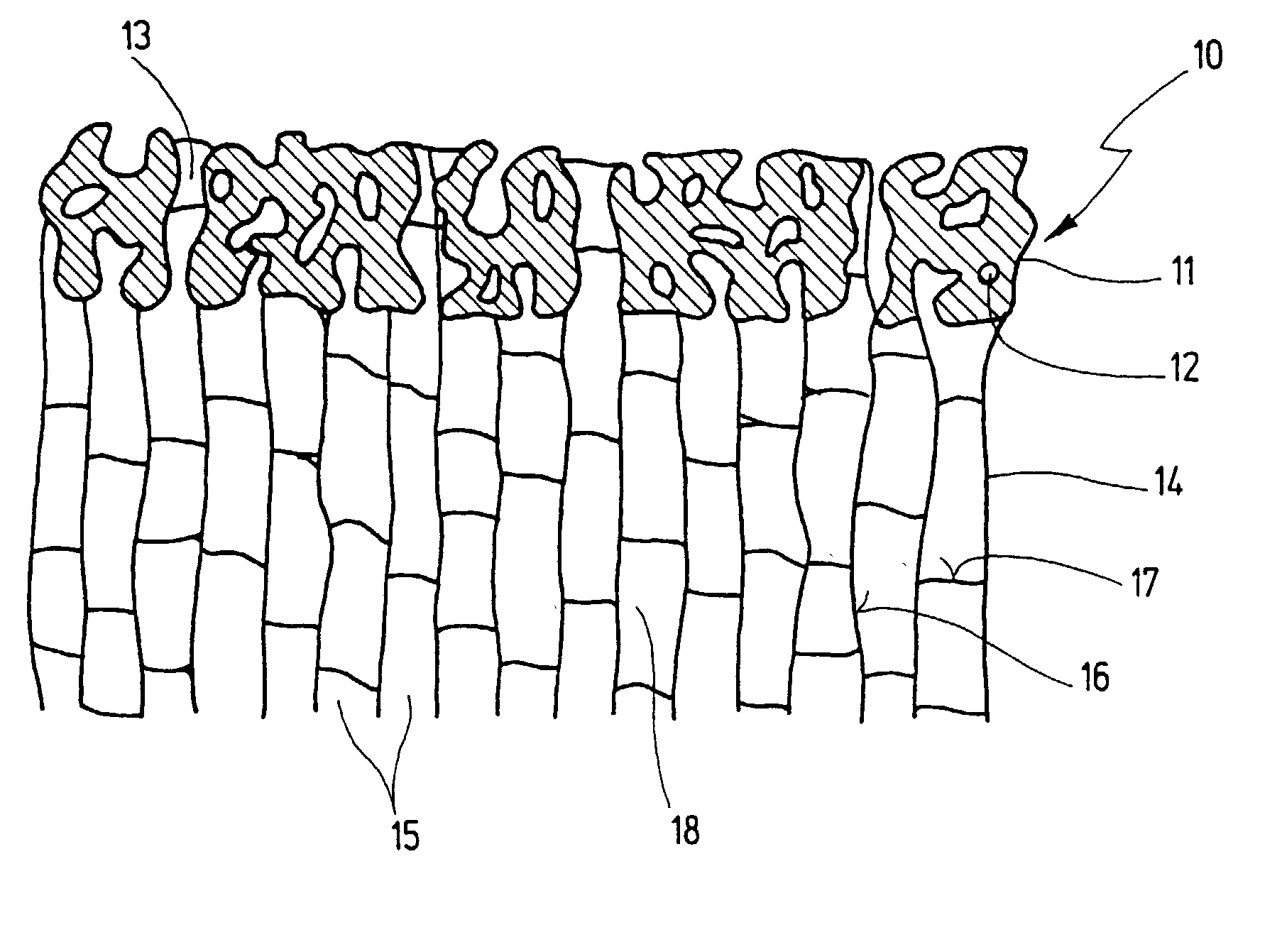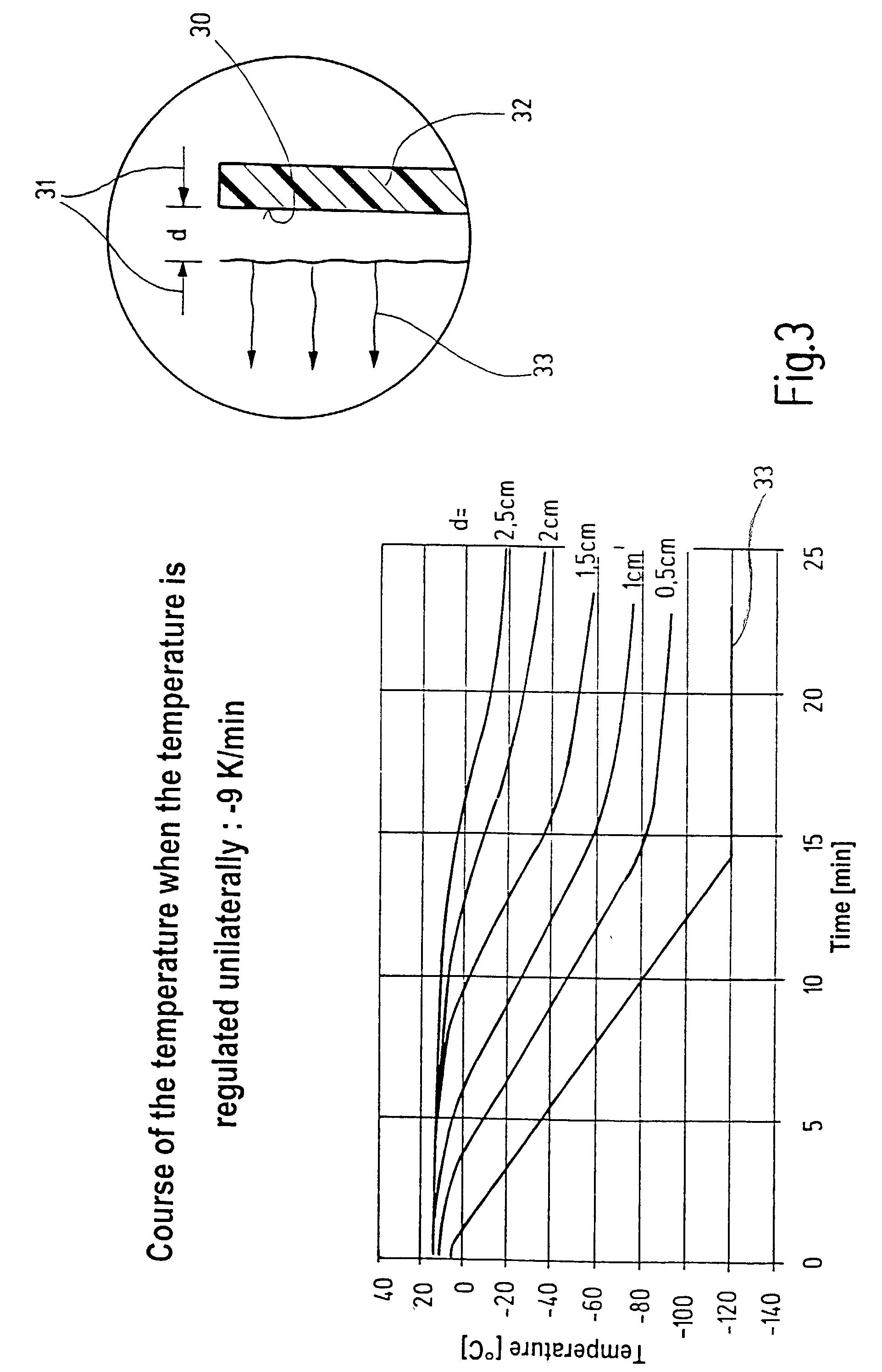Implant and process for producing it
a technology of implants and proxies, applied in the field of implants, can solve the problems of inability to use prostheses of this nature, and affecting the use of prostheses exposed foreign surfaces
- Summary
- Abstract
- Description
- Claims
- Application Information
AI Technical Summary
Benefits of technology
Problems solved by technology
Method used
Image
Examples
Embodiment Construction
Producing a Vascular Graft According to the Invention
[0072] Known methods are used to produce a tubular foreign structure 40 which is composed of expanded polytetrafluoroethylene (ePTFE) having an internal diameter of 4 mm and a wall thickness of 100 .mu.m. A very high porosity is achieved as a result of stretching, such that the mean pore size, determined by the distance between the PTFE nodes, is 60 .mu.m.
[0073] The ends of the tube, whose total length is 340 mm, are in each case pushed, by 15 mm, onto concentrically double-lumened metal tubes 41, 42 having an external diameter of 4.1 mm. At a distance of 15 mm from its end 46, the metal tube 42 possesses a flange 44. A ring 43, which can be clamped on the tube using a socket, is located on the second tube. The ring 43 possesses a clamping device 54 with which one end of the foreign structure 40 can be clamped into the ring 43. The free ends of the metal tubes can be connected to a vacuum pump.
[0074] In parallel to this, an aqueou...
PUM
 Login to View More
Login to View More Abstract
Description
Claims
Application Information
 Login to View More
Login to View More - R&D
- Intellectual Property
- Life Sciences
- Materials
- Tech Scout
- Unparalleled Data Quality
- Higher Quality Content
- 60% Fewer Hallucinations
Browse by: Latest US Patents, China's latest patents, Technical Efficacy Thesaurus, Application Domain, Technology Topic, Popular Technical Reports.
© 2025 PatSnap. All rights reserved.Legal|Privacy policy|Modern Slavery Act Transparency Statement|Sitemap|About US| Contact US: help@patsnap.com



